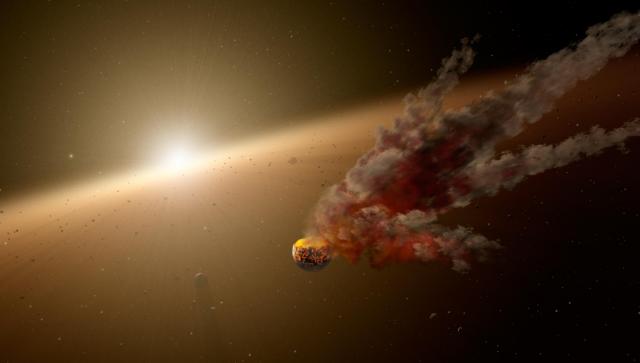Within our own galaxy, some astronomers believe there may be a massive piece of alien technology, built to harvest energy from a distant star. The star, KIC 8462852, also known as Tabby's Star, exhibits strange behavior, flickering and dimming, that can't be explained by any known astronomical phenomena. A new, unpublished study posted to arXiv reports the results of studying images of the star from the Kepler Telescope over the past four years. The paper shows shocking results: the star's luminosity varied, sometimes dipping by 20% over the course of the study period. Even more perplexingly, its total luminosity, or flux, diminished by 4% overall over that time.
"The part that really surprised me was just how rapid and non-linear [the dimming] was," study author Ben Montet of Caltech told Gizmodo. "We spent a long time trying to convince ourselves this wasn't real. We just weren't able to."
Tabby's Star was first observed in the 19th century, providing scientists plenty of data to reference in their search for answers. Another researcher, Bradley Schaefer of Louisiana State University, published a study earlier this year claiming that the light output of the star has decreased by 19% in 100 years. His claims were highly disputed. Now, this data seems to back up the assertion that the star is dimming at an astonishingly rapid rate, even if Schaefer's data is not totally accurate.
One of the explanations for this phenomena, and the one that has received the most press, is the idea that the star could be flickering and dimming due to an "alien superstructure" that extraterrestrial beings are building around their star as a way, perhaps, to collect energy (these hypothetical structure are known as Dyson spheres). Though there's been no proof of this hypothesis, it also can't be ruled out. The other theories, including that the star is blocked by the debris of a smashed planet, or that the dimming is caused by what's known as "gravity darkening," would go towards explaining parts of the phenomenon, but no current theory could explain it entirely.
"The new paper states, and I agree, that we don't have any really good models for this sort of behavior," Jason Wright, the Penn State astronomer who first suggested the alien superstructure theory, said. "That's exciting!"
Source: Gizmodo



0 comments:
Post a Comment